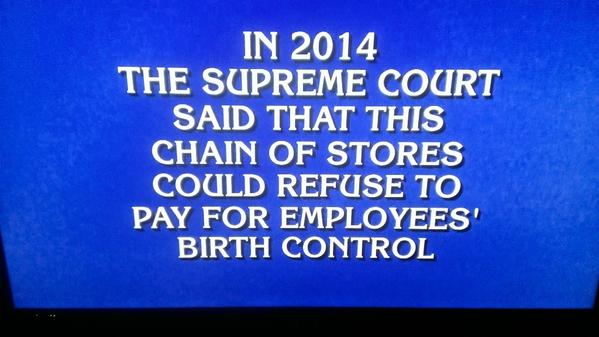Way back in January I queried whether–if the GOP took the Senate–the Harry Reid could ram through a series of nominations during the lame duck session. Now it seems that that Democrats are gearing up for pushing through a rash of midnight appointees.
“We will definitely move a lot of nominees during the lame duck one way or the other — possibly more if Republicans take the majority,” said a Democratic Senate leadership aide. …
Norm Ornstein, a congressional scholar at the American Enterprise Institute, said, “It would be crazy if [Senate Majority Leader Harry] Reid did not call them back as soon as possible and go into long hours, night and day, to process as many confirmations as he can.” But he cautioned that doing so “will inflame Republicans and drive them absolutely batshit.”
This strategy is looking all the more necessary as Senate Majority Leader Mitch McConnell may possibly deny *every single* Obama nominee a vote during the next two years. Sahil Kapur explores this possibility, quoting Randy Barnett and Roger Pilon, among others.
What if the Senate does not push through the lame duck nominations? Can the President turn to his recess power? No, not the intra-session power that was at issue in Noel Canning. The House will not let the Senate recess, and force it to hold pro forma sessions. What if he relies on the inter-session recess?
Professor Seth Barrett Tillman sent me this note:
The House and Senate must adjourn and recess sine die with the expiry of their last session at the end of any two-year congressional term. Then a new Congress will meet. That recess might last for a moment, and during it the President can make his recess appointments. That’s akin to what Theodore Roosevelt did in 1903, when he made 160 recess appointments during two back-to-back congressional sessions within the same two-year congressional term. Here, in January 2015, the “break” would be between two congresses — so, arguably, Obama’s position in regard to making such recess appointments is stronger than Roosevelt’s was.
See also Seth’s arguments in two papers for the Northwestern Law Review Colloquy, and two replies from Professor Brian Kalt.
Although the Court in Noel Canning rejected the idea of an intra-session break that was only three days long, it did not have the occasion to opine on the inter-session recess. Could the President seize the moment between sessions (if such a moment exists) to appoint judges or executive branch officials? Since this is his last term he won’t need them the latter to be confirmed again. But it would make a mess for judges, whose commission would expire in January 2017, right as a new President is entering Washington.
The next few months could be really interesting. Stay tuned.
Update: Christopher E. Mills writes in with two quotations from Noel Canning that may shed some light on the appropriateness of TR’s last-second appointments.
“Even the Solicitor General, arguing for a broader interpretation, acknowledges that there is a lower limit applicable to both kinds of recess. He argues that the lower limit should be three days by analogy to the Adjournments Clause of the Constitution. Tr. of Oral Arg. 11. That Clause says: “Neither House, during the Session of Congress, shall, without the Consent of the other, adjourn for more than three days.” Art. I, §5, cl. 4. … We agree with the Solicitor General that a 3-day recess would be too short.”
“There are a few historical examples of recess appointments made during inter-session recesses shorter than 10 days. We have already discussed President Theodore Roosevelt’s appointments during the instantaneous, ‘fictitious’ recess. . . . There may be others of which we are unaware. But when considered against 200 years of settled practice, we regard these few scattered examples as anomalies. We therefore conclude, in light of historical practice, that a recess of more than 3 days but less than 10 days is presumptively too short to fall within the Clause.”
The Court stopped short of saying the fleeting, inter-session recess was unconstitutional, and the SG seemed to agree that it may be too short, though there is no definitive ruling here.
Update 2: On a close read of the transcript, I don’t know that the Solicitor General took any position on whether the three-day limit should apply to the inter-session recess appointments. Here is the relevant exchange between the Solicitor General and Justice Kennedy on p. 11 of the transcript:
GENERAL VERRILLI: I think the the way we resolve that problem is by looking to the Adjournment Clause. We think, if it’s a break that is sufficiently short, that it wouldn’t require the – wouldn’t require the one House to get the consent of the other, but that’s a de minimis recess, and that’s not a recess in which the President would have authority.
Verrilli’s answer is premised on one House not allowing the other to adjourn during an inter-session recess. The Senate does not need the House’s permission to adjourn between sessions of Congress. Therefore this answer is not responsive to inter-session recesses, even if the Justices’s questions asked about it.
Update 3: Christopher E. Mills notes that in the government’s merits brief, they only seem to focus on the three day floor with respect to intra-session recess, and not inter-session recesses.
The Adjournment Clause makes clear that the taking of a legislative break of three days or less “during the Session of Congress” is still an “adjourn[ment],” Art. I, § 5, Cl. 4, but the Executive has long understood that such short intra-session breaks—which do not genuinely render the Senate unavailable to provide advice and consent—are effectively de minimis and do not trigger the President’s recess-appointment authority. (page 18)
For more than 90 years, the Senate and the Executive have agreed on a functional understanding, under which short intra-session breaks of three or fewer days do not trigger the Recess Appointments Clause, but longer breaks can do so. (page 45)
In fact the SG recognizes that there were many inter-session recesses that were zero days long.
The Senate has had many inter-session re- cesses that were zero, one, or two days long (e.g., in March 1791, 1793, 1797, 1801, 1867, 1877, 1881, 1885, 1897, 1903, 1905, 1909, 1913, 1917, 1921, and 1925; in December 1903 and 1922; in January 1941, 1942, 1980, 1992, and 1996). S. Pub. 112-12, Official Congressional Directory, 112th Congress 522-535 (2011) (Congressional Directory), www.gpo.gov/fdsys/pkg/CDIR-2011-12-01/ pdf/CDIR-2011-12-01.pdf.6


